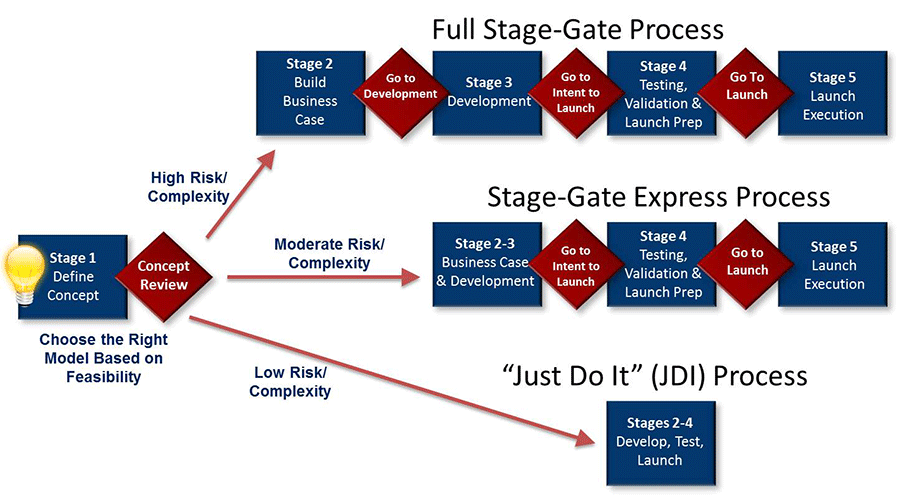Introduction – Why Faster Housing?
Australia is in the middle of a housing supply crunch. Prices are rising, the rental market is tightening, and many people feel locked out of home ownership. The FWPA’s "More Houses Sooner" report takes a deep dive into this crisis, aiming to offer solutions to meet the urgent demand.
The report argues that increasing the pace of residential construction—particularly through prefabrication and offsite construction—could help fill the housing gap. It proposes that shifting more of the building process offsite could reduce costs, speed up delivery, and ease labour bottlenecks. Sounds promising, right?
But here’s the thing: while “faster housing” may sound like the magic bullet, homeowners need to ask a few hard questions.
How do we balance speed with quality? Can we be sure that homes built quickly will last just as long and perform just as well as those built the traditional way? Will corners be cut, or will regulations be strictly followed?
It’s important to understand that while the government and industry may be pushing for speed, this drive should not come at the expense of quality, durability, and compliance with the National Construction Code (NCC) and Australian Standards. These rules are there to protect you, the homeowner, from unsafe or poor-quality builds. We already have enough construction quality issues, so pouring fuel on the fire is the last thing everyone needs.
The FWPA report is detailed, but it leans heavily into industry optimism. It promises a lot—more homes, faster delivery, cost savings—but it’s up to you as a homeowner to think critically about what’s being proposed.
You deserve to know what these changes might mean for the house you plan to buy or build.
The Housing Shortage – Demand, Supply, and What’s at Stake
Australia’s housing shortage isn’t a new problem, but it’s becoming more exacerbated. The FWPA report highlights a range of factors driving the demand: population growth, urbanisation, high immigration levels, and limited affordable housing supply. The report paints a picture of a housing market struggling to keep up.
On the demand side, Australia’s growing population, particularly in major cities, puts immense pressure on housing availability. More people, more households, and higher demand for homes mean prices are pushed up and competition intensifies.
For renters and prospective homeowners, this translates into higher costs and fewer choices.
On the supply side, the report points to several bottlenecks. There’s a shortage of skilled tradespeople, delays in approvals, and the rising cost of materials and land. Combine these with an often sluggish and fragmented planning system, and it’s clear why housing supply is lagging behind.
The report suggests that unless we find ways to build more homes—and build them faster—the housing crisis will deepen. However, it’s important to approach these proposals with caution.
Building more homes faster may sound like an obvious solution, but it brings risks that homeowners should understand.
For instance, a focus on quantity over quality can mean that design, sustainability, and construction standards are compromised.
Think of it this way: would you rather have a well-built, energy-efficient, long-lasting home, or a quickly thrown-together house that may need repairs in just a few years?
There’s also a broader question of fairness. Rapid construction can lead to developments that cater more to investors or developers chasing profit, rather than to the needs of average families. This could widen the gap between what homeowners want and what the market delivers.
Solutions Proposed – Prefabrication and Offsite Construction
To close the gap between supply and demand, the FWPA report champions the use of prefabrication and offsite construction. These methods involve producing building components—such as walls, roofs, or even entire modules—in controlled factory settings and then assembling them onsite.
The idea is to speed up the process, improve quality through factory precision, and reduce the reliance on scarce skilled labour.
The report highlights several advantages of this approach:
- Faster Build Times: Assembly of prefabricated components onsite can be completed in days rather than months.
- Labour Efficiency: Fewer skilled workers are needed onsite, addressing trade shortages.
- Potential Cost Savings: Factory-controlled production may reduce waste and allow for bulk purchasing of materials.
Sounds like a win-win, right? Well, it’s not quite that simple.
The risks of prefabrication are often understated. For one, transporting and installing large components onsite brings its own challenges. Poor alignment, improper sealing, or rushed assembly can compromise the structural integrity of the building. These risks can be compounded if the builder is inexperienced with modular systems or cuts corners to meet deadlines.
There’s also the question of compliance. Prefabricated components still need to meet the requirements of the National Construction Code (NCC) and relevant Australian Standards. If components are made offshore or by suppliers without rigorous oversight, there’s a risk of non-compliance or poor-quality materials slipping through the cracks.
It’s also worth noting that while prefabrication is marketed as being cost-effective, these savings aren’t always passed on to the homeowner.
Builders and developers may retain the margin benefits, while the buyer pays the same—or sometimes more—than for a traditionally built home.
In short, while prefabrication and offsite construction have potential, homeowners should be cautious. It’s vital to ask your builder how these methods will impact the final product, what quality control measures are in place, and how compliance with Australian regulations will be ensured.
The Compliance Challenge – NCC, Australian Standards, and Quality Assurance
One of the most important aspects of any construction project—whether fast-tracked or not—is compliance. The FWPA report recognises the importance of maintaining standards but doesn’t always give this issue the depth it deserves.
In the rush to build more homes faster, there’s a real risk of non-compliance slipping through the cracks.
Here’s why it matters:
- National Construction Code (NCC): The NCC sets the minimum standards for safety, health, amenity, and sustainability of new buildings. It covers structural integrity, fire safety, waterproofing, energy efficiency, and more.
- Australian Standards: Specific standards—such as AS 4773 for masonry construction or AS 1684 for timber framing—provide detailed requirements that builders must follow. These aren’t optional; they’re mandatory for compliance and safety.
- Quality Assurance: Without thorough quality control checks, fast-tracked construction can overlook essential details. Waterproofing, fireproofing, and correct installation of systems like electrical and plumbing are crucial but easy to miss in a rush.
The FWPA report leans into the idea that prefabrication will naturally ensure quality because of controlled factory conditions. While this is true to an extent, it overlooks what happens onsite.
Poor handling of prefabricated components, lack of supervision, and rushed assembly can all compromise the quality and safety of the final structure.
Additionally, the report doesn’t fully address how builders and developers will be held accountable if things go wrong. Homeowners could be left with costly defects, limited legal recourse, and the burden of lengthy disputes if compliance issues aren’t identified and rectified early.
Homeowners should understand their rights and responsibilities, including:
- Asking for evidence of compliance, such as independent third-party certification or quality control records.
- Understanding that council inspections and private certifiers often check only limited aspects of a build.
- Knowing that quality assurance is not just the builder’s responsibility—it’s your right to demand it.
Economic and Environmental Implications
The FWPA report is optimistic about the potential economic benefits of ramping up housing construction. It suggests that faster builds will create jobs, stimulate economic activity, and provide much-needed housing supply. It’s true that a construction boom can boost the economy—especially in sectors like manufacturing, logistics, and building materials—but there’s more to the story (there always is).
Economic Considerations
The report assumes that speeding up housing delivery will lower costs for homeowners by increasing supply. However, this isn’t guaranteed. The costs of land, approvals, and materials continue to rise, and developers may not necessarily pass savings on to consumers. Instead, profits could be retained by builders, while homeowners pay similar—or even higher—prices for houses built faster.
There’s also the risk of inflationary pressures.
Rapid construction activity can increase demand for materials and labour, pushing prices higher. This could offset some of the proposed economic benefits and make it harder for home buyers to access affordable housing.
Environmental Considerations
The report promotes the environmental advantages of prefabrication, such as reduced waste and potential energy savings during construction. While factory-controlled conditions can reduce onsite waste, the environmental benefits are often overstated. The report underplays the environmental trade-offs, such as:
- Increased transportation emissions from moving large components over long distances.
- Embodied carbon in prefabricated materials, particularly if imported or not sustainably sourced.
- The risk of lower energy performance if buildings are assembled poorly or use substandard materials.
True sustainability requires more than faster construction. It involves comprehensive life cycle assessments, high-quality energy-efficient designs, and long-term durability. Unfortunately, the report doesn’t offer a deep analysis of these factors, leaving homeowners to wonder whether the environmental gains are as significant as claimed.
Industry Capacity and Workforce Challenges
The construction industry’s capacity to deliver more homes faster is a major sticking point. The FWPA report argues that offsite construction and prefabrication will ease pressure on Australia’s strained construction workforce by reducing the need for skilled onsite labour.
On paper, this sounds promising. In reality, it’s a bit more complicated.
The Workforce Shortage
Australia’s construction sector has long struggled with a shortage of skilled workers, including carpenters, plumbers, electricians, and site supervisors. The report suggests that shifting production to controlled factory settings could help alleviate this shortage by standardising processes and reducing reliance on skilled trades.
However, even prefabrication requires experienced workers to assemble, install, and finish the components onsite. Without adequate training and supervision, poor workmanship can undermine the benefits of offsite construction.
Risks of Rushing
Fast-tracking builds in a sector already stretched thin could lead to:
- Inconsistent workmanship, especially on complex sites.
- Increased reliance on subcontractors, some of whom may lack experience with new systems or technologies.
- Gaps in quality control if supervision is inadequate or processes aren’t clearly defined.
Measure twice, cut once was the industry mantra. Now it seems more like "turnover at all costs, "value engineering", faster, cheaper, outsource."
Training and Certification
The report briefly acknowledges the need for training but doesn’t fully address the scale of the challenge. Upskilling the workforce to handle new construction methods, materials, and technologies is essential for success. Without proper training and certification, there’s a risk of a two-speed system emerging: experienced teams delivering good-quality prefab builds and less experienced crews cutting corners.
For homeowners, this means it’s extremely important to ask questions about who’s building their home, how experienced the team is with offsite construction, and what quality control processes are in place (before the contract is signed).
Risks and Biases in the Report’s Approach
While the FWPA report is full of hope (we like that) about solving the housing crisis through faster construction, it’s important to view its claims with a healthy dose of scepticism as well. The report tends to gloss over potential downsides and leans heavily into the interests of developers, manufacturers, and the construction industry.
Commercial Bias
The report highlights the benefits of offsite construction and prefabrication, which are supported by commercial players keen to expand these markets. There’s limited discussion on the potential for profit-driven compromises in materials, construction practices, or quality control. The report underplays how homeowners might bear the cost of defects, delays, or disputes if things go wrong.
Homeowner Perspectives
It’s telling that the report doesn’t focus much on the homeowner experience. There’s little discussion of consumer protections, dispute resolution processes, or strategies to ensure long-term durability.
Instead, it paints a picture where everyone wins—without acknowledging the risks homeowners face in a high-pressure, fast-paced construction environment.
Oversimplification of Workforce Issues
The report suggests that prefabrication solves the labour shortage, but it downplays the need for skilled workers onsite. It doesn’t address how builders will maintain quality control or ensure compliance when rushing to meet targets.
Sustainability Oversight
While the report briefly mentions environmental benefits, it doesn’t provide a comprehensive assessment of long-term sustainability impacts, particularly around embodied carbon, energy efficiency, and the durability of prefabricated systems.
Homeowner’s Checklist – What to Watch For
If you’re planning to buy or build a new home in a market where speed is the focus, it’s important to stay vigilant.
Here’s a practical checklist for homeowners to protect themselves and ensure the home they’re investing in meets expectations:
✅ Ask About Compliance: Request documentation that proves your home meets the NCC and relevant Australian Standards (e.g., AS 4773.2 for masonry (small buildings), AS 1684 for framing, 3958.1 Ceramic Tiling, AS3740 for Waterproofing).
✅ Review Builder Credentials: Check the builder’s experience with prefabricated and offsite systems. Ask about training, certifications, and how quality control is managed.

✅ Inspect Contracts Carefully: Make sure your contract clearly specifies timelines, materials, standards of work, and penalties for non-compliance. Avoid vague language that leaves room for shortcuts.

✅ Understand the Inspection Process: Know what council inspectors and private certifiers check—and what they don’t. Consider hiring an independent inspector to review your build at key stages.
✅ Check for Red Flags: Be wary of rushed timelines, unusually low prices, or builders unwilling to answer detailed questions.
✅ Monitor Construction Progress: Stay involved. Visit the site regularly and ask questions. If something doesn’t look right, raise concerns early.

✅ Demand Transparency: Insist on clear communication about progress, delays, and changes to the build.

✅ Prioritise Long-Term Quality: Focus on more than just the handover date. Ask how the home will perform in terms of energy efficiency, durability, and maintenance over time.
Conclusion – Can More Houses Sooner Really Work for You?
The FWPA’s “More Houses Sooner” report paints a picture of a housing future driven by speed and innovation. Prefabrication and offsite construction are positioned as the solution to Australia’s housing crisis, promising faster builds, economic benefits, and environmental gains. But as we’ve seen, the reality is far more nuanced.
For homeowners, the key questions are simple yet crucial:
- Will these fast-tracked homes stand the test of time?
- Will quality control and compliance be maintained despite the push for speed?
- Are cost savings really being passed down to buyers, or are they just padding developer profits?
- Will the environmental benefits actually materialise, or will short-term gains come at long-term costs?
It’s clear that while faster housing construction can help address supply shortages, it must be done responsibly.
Homeowners should stay engaged, ask tough questions, and demand transparency. The quality of your new home—and your peace of mind—depends on it.
Remember: your home is more than just a building. It’s where you’ll live, raise a family, and make memories. Don’t let the rush for speed compromise the quality and safety of that future.
FAQs: Homeowner Questions Answered
1. What is prefabrication and how does it work?
Prefabrication involves making building components (walls, floors, modules) in a factory, then transporting and assembling them onsite. It aims to save time and reduce onsite labour.
2. Will homes built faster still meet quality standards?
They should—but only if builders follow the NCC and Australian Standards, use quality materials, and apply rigorous quality checks. Poor oversight or rushed assembly can result in defects.
3. What are the risks of rapid construction for homeowners?
Risks include poor-quality workmanship, non-compliance with standards, inadequate site inspections, and potential long-term durability or maintenance issues.
4. How can I ensure my builder complies with the NCC and Australian Standards?
Ask for documentation showing compliance, use independent inspections, and carefully review your contract to ensure clear quality expectations and remedies for defects.
5. What role do council and certifiers play in ensuring quality?
They check compliance with building codes and approvals, but their inspections are often limited in scope. Homeowners should not assume this guarantees full quality control.
6. Is prefabricated housing cheaper or just faster?
While it can reduce costs for builders, savings aren’t always passed on to buyers. Prefab homes may not be significantly cheaper for consumers, despite faster build times.
7. Are there long-term maintenance concerns with fast-built homes?
Yes, if construction quality is compromised or materials are substandard. Poor assembly can lead to leaks, cracks, and other issues that emerge over time.
8. How can I protect myself when signing a building contract?
Ensure your contract includes clear specifications, timelines, penalties for delays or defects, and dispute resolution processes. Get legal advice if unsure.
9. Will faster builds actually solve the housing affordability crisis?
Not entirely. Speeding up construction helps supply, but factors like land costs, zoning, and market dynamics also play major roles in affordability.
10. What should I look for during site inspections?
Look for signs of rushed work (poor finishes, misalignments), check compliance with plans, and don’t hesitate to bring in an independent inspector for major stages.










